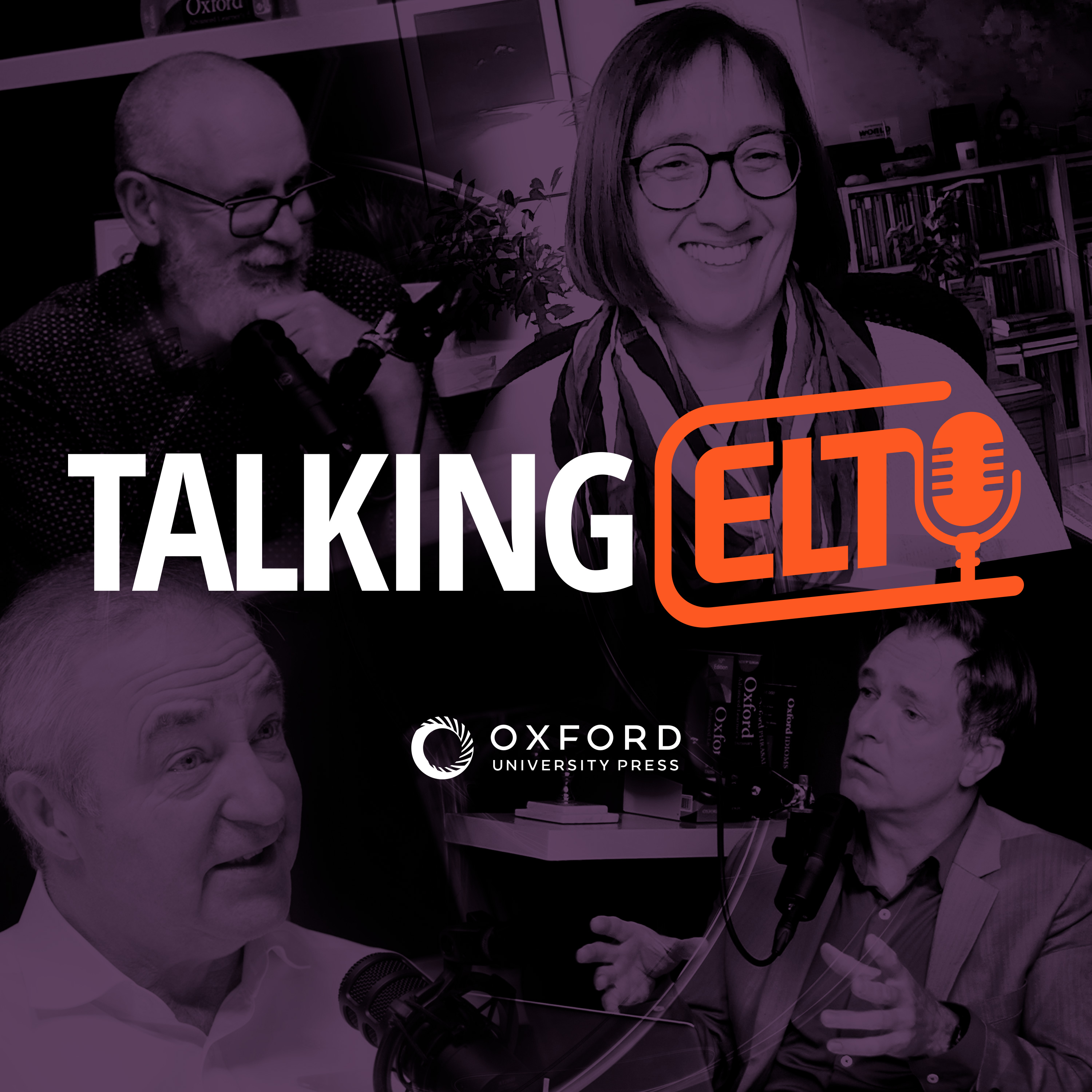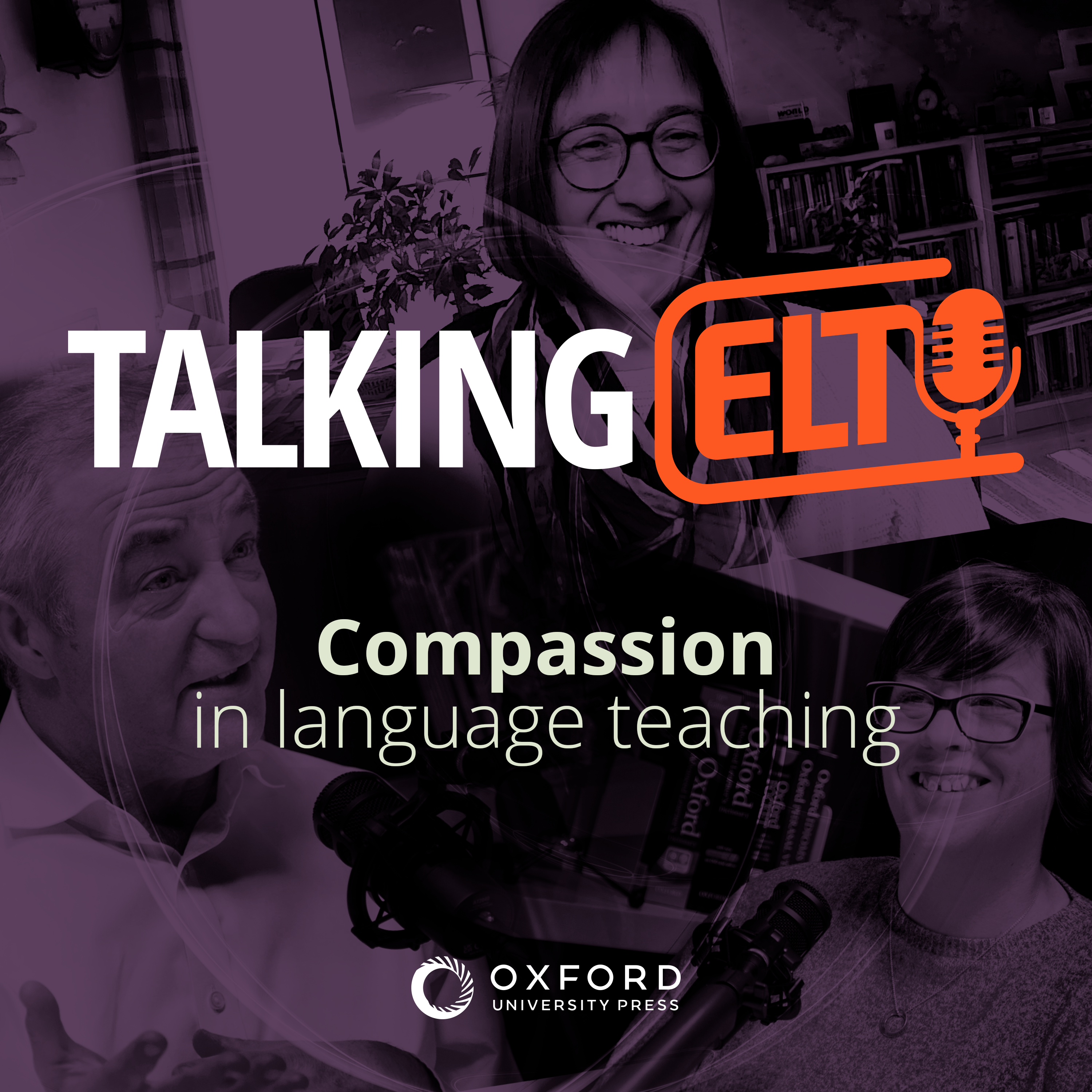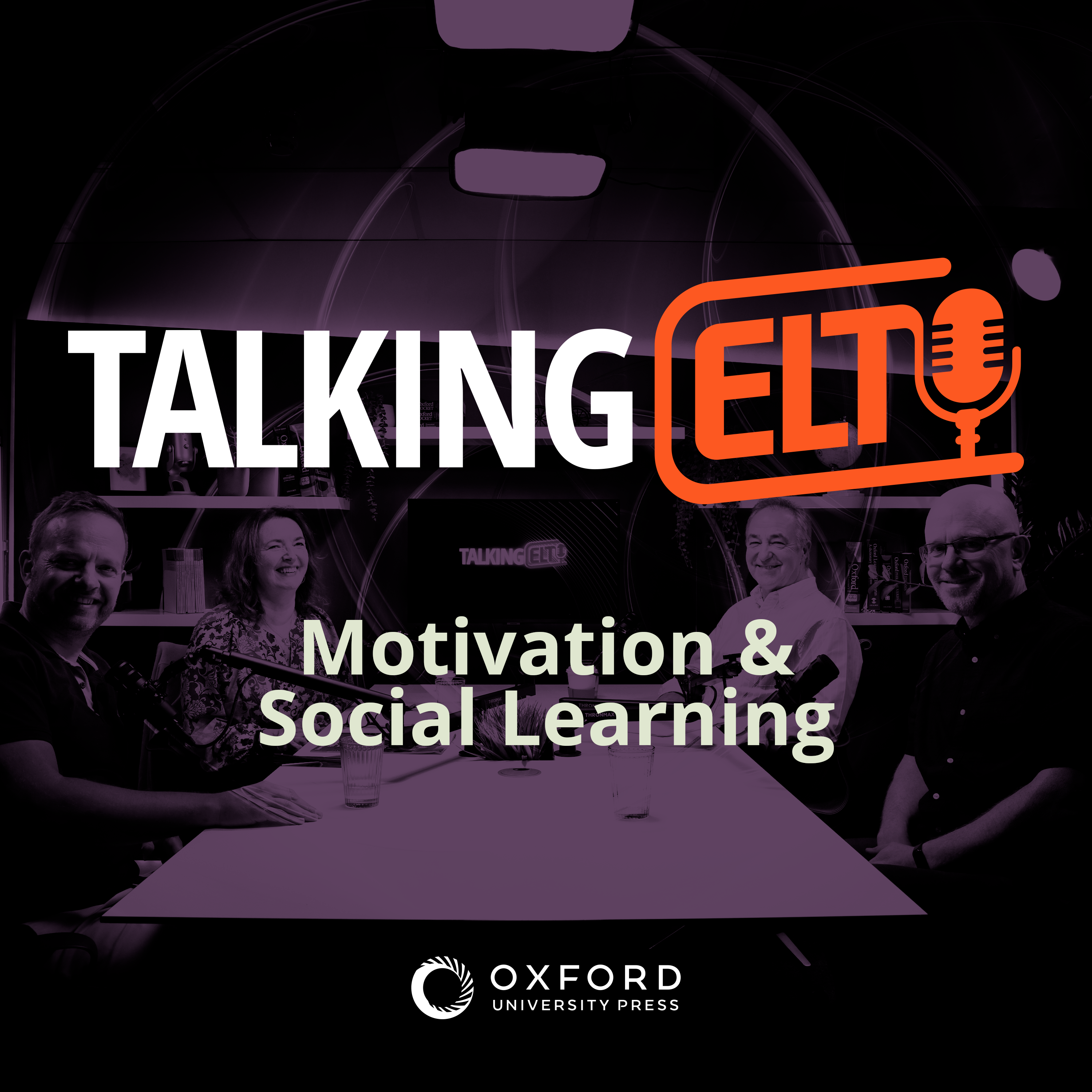Episode Transcript
[00:00:10] Speaker A: Hey, everyone, and welcome to Talking ELT, the easiest place to learn about the big trends in language teaching today. We're continuing our conversation about self regulated learning with Nathan Hayo and Fleur.
[00:00:22] Speaker B: We're talking about self regulated learning and how we can help teach us, support it.
And when you wrote the position paper, you actually created a framework for this. And it's a framework that guides both teachers and institutions through the process of fostering and supporting independent learners, autonomous learners, and how to help learners develop these skills. And I was hoping you could tell us a bit about the framework. And for our listeners who may not have read the paper or heard about this before, could you quickly walk us through it and what it involves?
[00:00:55] Speaker C: Yeah, absolutely. So the framework itself, as you can see, is there's two parts. There's a top half, which talks about the wider context, and then the bottom half talks specifically about teaching practices so the skills that teachers can help learners to develop. And for those of you who might be listening to this episode rather than watching, I'll try and make it come to life for you. So there are essentially six different elements, or stages if you will, in the self regulated learning process. And they all have to come together to create a self regulated learning process or experience. And what is important to recognize is that we'll talk about these six different components or stages in a moment, a little bit, but they repeat. So it's a cycle. So once as a learner, you go through a self regulated learning process, it all starts again, basically is a continuous, lifelong process.
[00:01:55] Speaker D: So, first of all, you have to sort of talk to learners and make them understand why this is good for them, why they need to know about this, that it's not just for the subject that they're doing in class today with you. But it's going to be for life in general, for their future academic life, their future work life, and bring it down to the relevance of what you're doing here and now with them, so that they can see why. Because you've got to get their engagement or else they won't see the point of continuing with this. But once you've got their interest and they can see the reason for it, then you can move on to the next stage, which is where you get them to think about what they need to work on. So it might be they're not very good at the past, simple, they might not be very good at speaking.
Whatever it is, get them to focus on that.
[00:02:42] Speaker B: Is it just language learning needs?
[00:02:45] Speaker D: It can be anything. It could be all sorts of needs. I mean, in the context of the English classroom, that but it could be anything.
[00:02:50] Speaker C: In the paper, we sort of distinguish between three broad categories of needs. We have the language needs like the ones that you just mentioned. And then we have learning needs. So the ability to, for example, plan your learning successfully and not procrastinate and things like that. And then the third category of needs is our emotional needs. So recognizing, for example, when you are feeling anxious or frustrated and knowing how to deal with that.
[00:03:17] Speaker E: Yeah, just to build on that, I think it's about developing that strategic response to how we're feeling and what our needs are. Which leads to the next step then is setting goals. So we have some form of motivation, we've identified certain needs. Now we need to set goals. And in the position paper we talk about smart goals, which are specific, measurable.
[00:03:39] Speaker C: Attainable, relevant and time bound.
[00:03:40] Speaker B: Oh, you're better at that. I always forget that I usually have.
[00:03:45] Speaker D: To look them up.
[00:03:46] Speaker E: Right. Thanks Hayo. So yes, we talk about smart goals and these of course are goals that we can set short term, long term, and even goals nested within larger goals.
With that clear goal setting process in place, learners then need to start making plans. So how are you going to go about achieving those goals? What is the plan that's in place or the plan that we can work on together to put into place so that you can self regulate your learning and achieve those goals?
[00:04:22] Speaker C: So the goal setting is kind of broader and longer term and the plans are more practical and shorter term, so you might have a longer term goal to achieve whatever it may be at the end of this year. And your plan for this week as a learner is obviously a set of more defined tasks.
[00:04:39] Speaker B: And what's this extra cycle?
[00:04:41] Speaker C: Well, the extra cycle, so this is the fifth of the six components. So this is where once you've made your plans, you engage in one or more language learning activities or tasks. And these could be tasks that you carry out in class with other learners, with your teacher. They could be things that you do on your own. But whatever the task may be, it involves three components that you as a learner are responsible for. One is to select the right resources to help you carry out that task. And resources could be materials, they could be a textbook, that could be a dictionary, they could also be other learners, they could be teachers, native speakers, whatever the case may be. But knowing as a learner what resources will help you is vital. And especially, of course, when we're talking about online resources, knowing what is a reliable trustworthy source, for example, is an example of knowing how to select the right resources. Once you've selected the resources, you select the most appropriate strategies, right? So you try and make the activity as efficient and as effective as possible. So for example, if I'm going to be having conversations with people, then I might want to practice beforehand my communication strategies. And then finally, for each and every task you need to as a learner, have some way of knowing whether you are doing well, whether the task is actually helping you to learn, whether you are carrying it out successfully. And in the paper we refer to this as monitoring progress.
[00:06:16] Speaker B: And then there's one last element in this cycle that happens before motivation flood. Do you want to bring us home?
[00:06:23] Speaker D: Self assessment. So then you do all these things and you think, okay, so have I achieved what I wanted? How am I doing? And that's very important.
[00:06:32] Speaker C: And that relates back again to the longer term goals as well.
Whereas with task regulation, you monitor your progress throughout the day or throughout the activities that you carry out. But the self assessment might happen once a week, once a month, once every few months, where you sort of take a step back and say, well, I set those goals earlier in the year. How am I doing? Am I actually achieving them or not? And a really important component that follows on from that also is to reflect. So once you've done your self assessment, that may well have some implications for well, it might have implications for your needs. Your needs may have changed in the last six months. Maybe in the last six months you moved up a grade or you got a new job.
And that of course then leads to perhaps selecting new goals and that requires new plans. So you can see how it's a continuous cycle of planning, action, reflection and starting over again.
[00:07:33] Speaker D: And I think the goal aspect is very important because if your goal is something that seems almost unattainable and very large, if you can break it into mini goals, then you'll gradually get there.
[00:07:44] Speaker B: Correct, that makes sense.
[00:07:45] Speaker E: This is something that we do in the toolkit as well, the toolkit that comes with a position paper. There's an activity where learners are outlining goals and basically mini goals in route.
[00:07:55] Speaker C: To those larger goals. Okay?
[00:07:57] Speaker B: Yeah.
[00:07:57] Speaker E: So there are actually photocopyable resources that we have where teachers can use those in the classroom and for learners to even use on their own to kind of help to inform this process.
[00:08:08] Speaker C: Well, what is really fascinating, and we had these conversations in writing the paper, and I'm sure many of our listeners and viewers will have had similar experiences too, is that learners are remarkably unprepared for these individual skills. And so, for example, I've had lots of cases where learners have either no clear idea at all of what aspects of the language they actually need or the wrong idea, right? So they might think that they need to learn English to perfection and every aspect of the language to perfection, which for some learners may be exactly what they need, but for many learners is not the case. So when you start actually engaging with learners and encouraging them to think about, well, why do you do this? Well, what is it that you want? What are you hoping to achieve? What is it for? What are your life goals? How does English fit in this? You can really start to see this sort of recognition of, like, right, okay, maybe I don't need to learn everything that I've been trying to learn, and.
[00:09:21] Speaker D: Now it's more manageable.
[00:09:22] Speaker C: Yeah, exactly.
[00:09:24] Speaker E: And it's interesting that even in something like identifying or setting specific goals, as you just mentioned, that could actually work as a feedback loop back into motivation. It could be even before they take action, it's, oh, now I know what my goal is. Before I was a bit lost. I wasn't sure how to approach this. I didn't have a plan. So even though we've put this framework together in a seemingly linear way, these different parts of the processes work as feedback loops back into earlier processes. And something as simple as creating a plan and a learner, seeing that plan in place, could increase motivation and providing that structure.
[00:10:03] Speaker D: And I'd say when you're making the plan, the mistake I always make is forget about the time element. Think, how much time have you got to devote to this and factor that in as well.
[00:10:13] Speaker C: Of course, what's really important with this framework, and I just want to clarify, and I think I'm speaking on behalf of all of us when I say that this is just one way of formulating visualizing the process. There are probably other ways, and there's certainly other terminology that could be used here. Yeah, the framework itself doesn't matter so much. What does matter is the systematicity, the fact that it's structured, and that as a teacher, whatever you do, that you know what you're doing, that there is a plan to it, and that there is a clear, meaningful sequence of steps. That's one. And secondly, equally importantly, that you have in your own curriculum plans, in your own syllabus, that you have an idea of when, which of these aspects of self regulated learning is going to be introduced, is going to be supported, is going to be practiced, et cetera. And then you can look at the curriculum and say, okay, I have this group of learners for the next three months or a year or whatever the case may be. Okay, let's see where we can fit this in and where we perhaps can assess whether learners have developed these skills as well.
[00:11:23] Speaker D: Yeah, otherwise it could easily get missed out and you'll end up bunching it all together and it won't be systematic.
[00:11:29] Speaker B: Gosh.
[00:11:29] Speaker E: I had one final comment and I just lost it. It went silent, and I was like, Where are you?
[00:11:35] Speaker C: That was the golden nugget of the day, wasn't it?
[00:11:37] Speaker E: Was something decent.
[00:11:39] Speaker B: If you have it, you can jump.
[00:11:41] Speaker D: In, jump it in. It was fine.
[00:11:43] Speaker E: No, it's all right.
[00:11:44] Speaker A: Thanks for listening to this episode of Talking ELT. The easiest place to learn about the big issues in language teaching. Don't forget to like and subscribe if you want to learn more about this issue and others like it. You can also get practical advice and resources on this topic by downloading our position paper. Just follow the link in the description.


